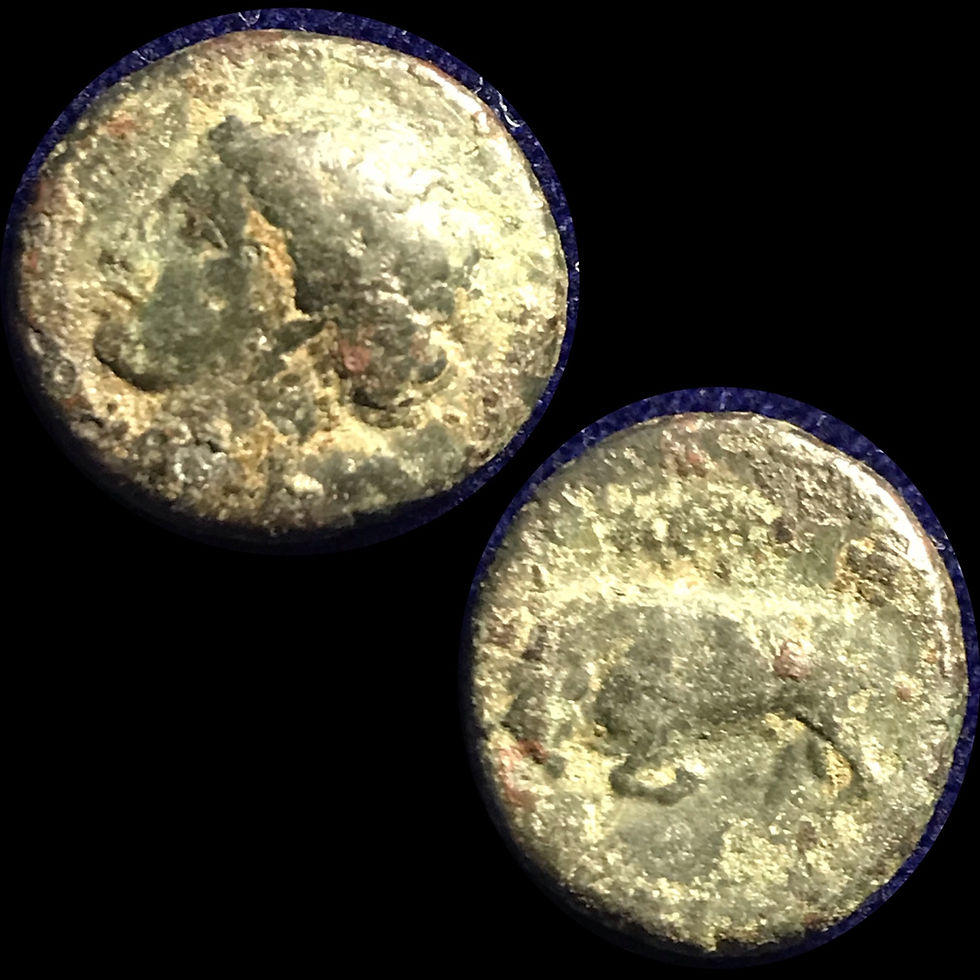Greek city of Syracuse in Sicily Agathocles: Tyrant of Syracuse 317-289, King of Sicily 304-289 B.C. Bronze 15mm (3.50 grams) Struck circa 317-310 B.C. Reference: BAR issue 9 cf.; CNS 99 cf. Head of Kore left. Bull butting left; dolphin above. In Greek mythology , Persephone also called Kore (the maiden)is the daughter of Zeus and the harvest-goddess Demeter , and queen of the underworld . Homer describes her as the formidable, venerable majestic queen of the shades, who carries into effect the curses of men upon the souls of the dead. Kore was abducted by Hades , the god-king of the underworld [2] The myth of her abduction represents her function as the personification of vegetation which shoots forth in spring and withdraws into the earth after harvest; hence she is also associated with spring and with the seeds of the fruits of the fields. Similar myths appear in the Orient , in the cults of male gods like Attis , Adonis and Osiris ,[3] and in Minoan Crete . Goddess of SpringPersephone as a vegetation goddess (Kore) and her mother Demeter were the central figures of the Eleusinian mysteries that predated the Olympian pantheon , and promised to the initiated a more enjoyable prospect after death. The mystic Persephone is further said to have become by Zeus the mother of Dionysos , Iacchus , or Zagreus . The origins of her cult are uncertain, but it was based on very old agrarian cults of agricultural communities. Persephone was commonly worshipped along with Demeter, and with the same mysteries. To her alone were dedicated the mysteries celebrated at Athens in the month of Anthesterion . In Classical Greek art , Persephone is invariably portrayed robed; often carrying a sheaf of grain. She may appear as a mystical divinity with a sceptre and a little box, but she was mostly represented in the act of being carried off by Hades . In Roman mythology , she is called Proserpina .
Ancient Greece, Syracuse, Sicily Agathocles Tyrant of Syracuse bronze coin
$49.99Price
